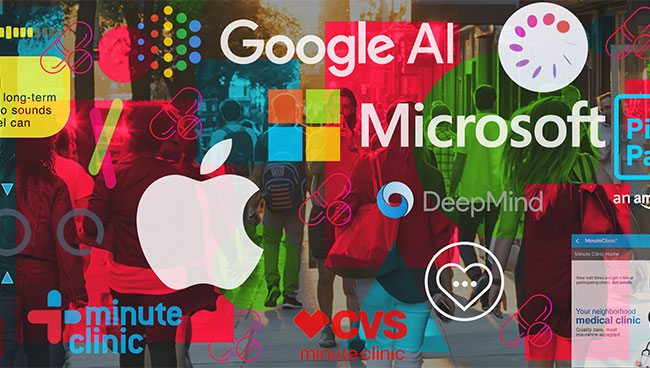If one device can pinpoint the moment in which wellness transitioned from a preference to a retail necessity, it would be the Apple Watch. We look into what Apple, along with tech companies like Google and Microsoft, have in store for consumer healthcare, and how it is changing the retail landscape for health and wellness.
The health tech revolution is here, and many of your best shoppers are wearing it, linking to it and receiving their physician-provided diagnoses through it.
Technology companies including Apple, Google and Microsoft are aggressively extending their core services to provide for one of the most important lifestyle interests of shoppers today: wellness. And by developing new innovations in health – a space formerly owned by big pharmaceutical companies – they are about to change the industry for good.
Which raises a key opportunity for retailers, where shoppers buy their big pharma products: How will they link their offerings to these new tech-provided services – to advance beyond merely selling good health and reinforcing their wellness positions among these tech giants?
Exercise trackers were just the start of it. Among the latest developments:
- Apple: The FDA in 2018 cleared two Apple Watch features: an electrocardiogram and an irregular heart rhythm detector. This coming September, Apple’s WatchOS 6 will include ovulation tracking, an app that alerts to potentially damaging noise levels and fall detection (also on the Watch Series 4).
- Google: Through its artificial intelligence (AI) company DeepMind, Google parent Alphabet is building an AI system that could alert doctors to dangerous medical conditions, such as kidney disease. If follows a physicians’ alert app called Streams, being tested by clinicians in British hospitals, that uses an algorithm by the UK’s National Health Services to detect kidney injury among patients. Google in time would like to use the app for AI-powered diagnosis in hospital wards, according to reports.
- Microsoft: Microsoft Healthcare introduced a Healthcare Bot that understands medical terminology and includes a built-in symptom checker for medical staff triaging patients. Hospitals are not the only targets. Medical insurance providers are using the bots so members can look up the status of insurance claims.
- And the Triumvirate + Apple: In late July, Apple, Google, Microsoft and Amazon entered into an initiative with health insurers and hospitals to provide consumers with easier access to their medical information, including tests, doctors’ visits and medical procedures.
Healthy Tech Means Healthy Retail
Here’s the thing: technology and retail are entwined. So by expanding their own businesses into healthcare, these tech companies have simultaneously been bridging the gap between retail and healthcare, to the point that it is now an easy hop-over.
And healthcare systems have been hopping. Specifically, they are seeking out retail partnerships through which they can enhance, and make more convenient, their own services. Wellness is, indeed, a shopper category.
Taking the Pulse of the Consumer, Literally, Retailers are not Being Left Behind
Health-focused retailers also are working to erase barriers to consumer wellness.
They’re offering apps that check vision (thanks, Warby Parker), as well as virtual physicians (CVS’s MinuteClinic Video Visits). 23andMe has made do-it-yourself DNA tests so popular that kits are now available for dogs . And Amazon in June 2018 entered the online pharmacy business by acquiring PillPack , through which customers can buy medications in pre-made doses.
These efforts raise expectations that all technologies, and all the many retailers and brands that use technology, will accommodate similar needs.
Make no mistake, retailers that do not add health-based, tech-enabled features to their core offerings risk losing more than wellness dollars. Shoppers may direct other spending away from them, as well.
The health-tech movement has not only taken hold, it is firmly embedded in the retail industry.


